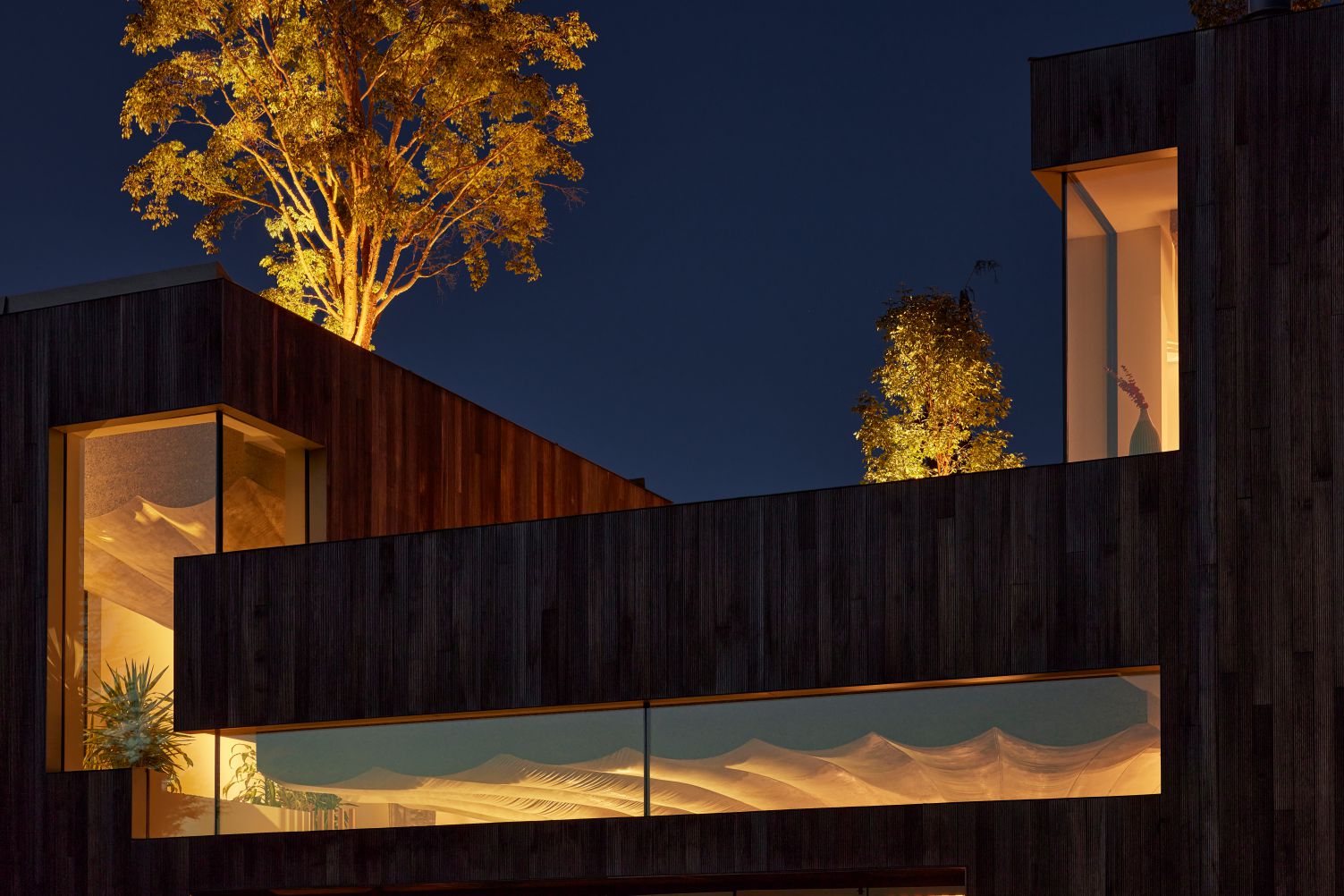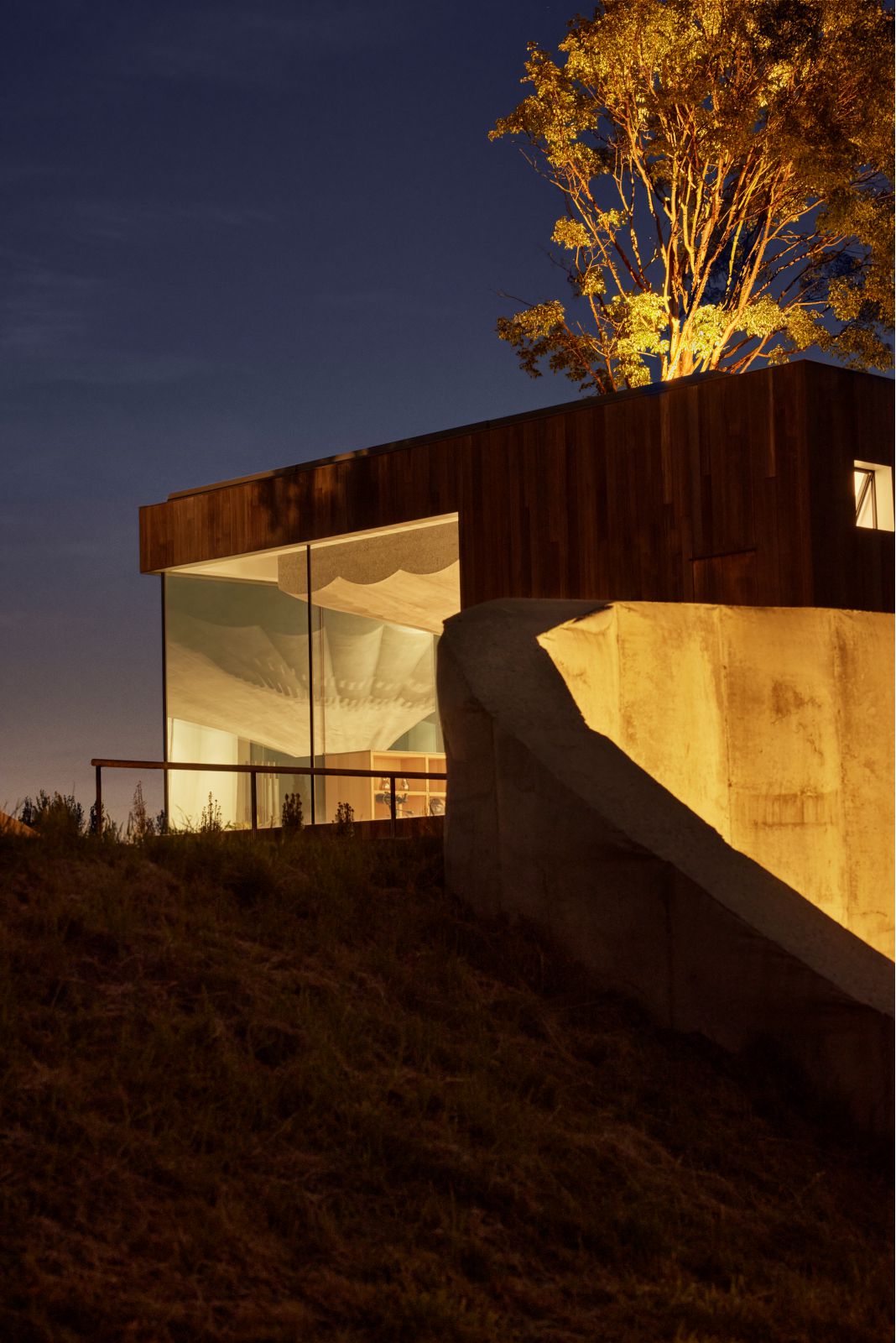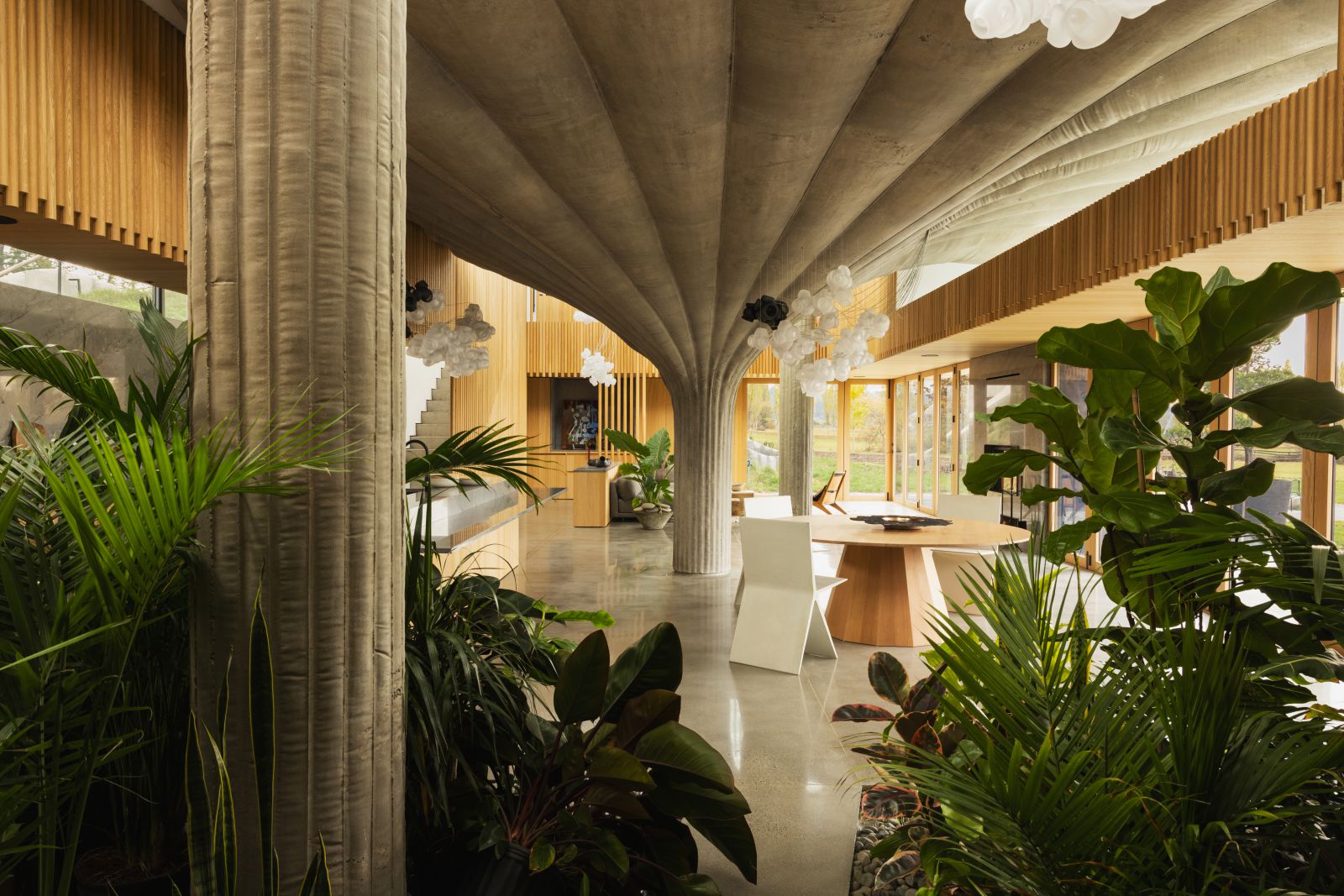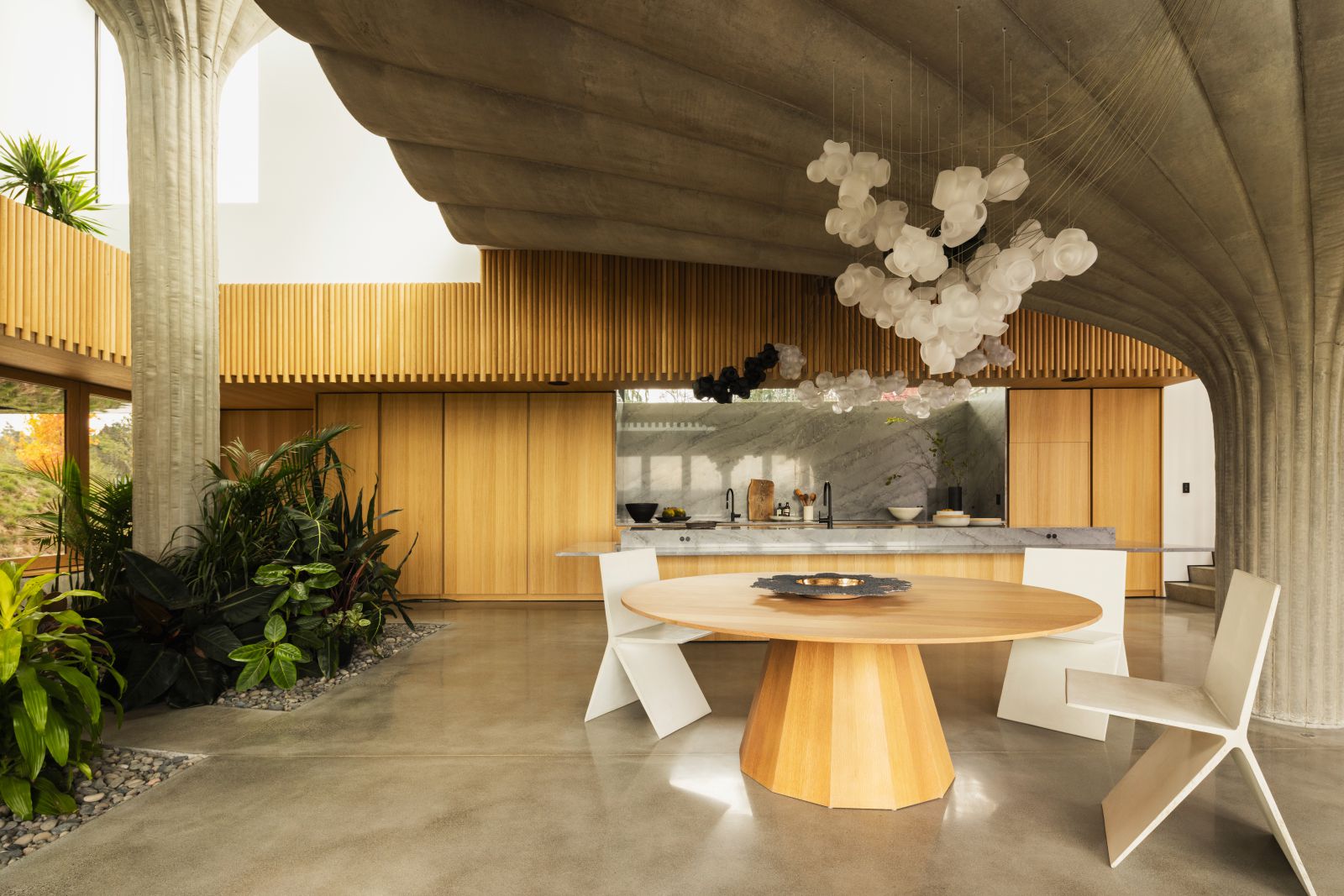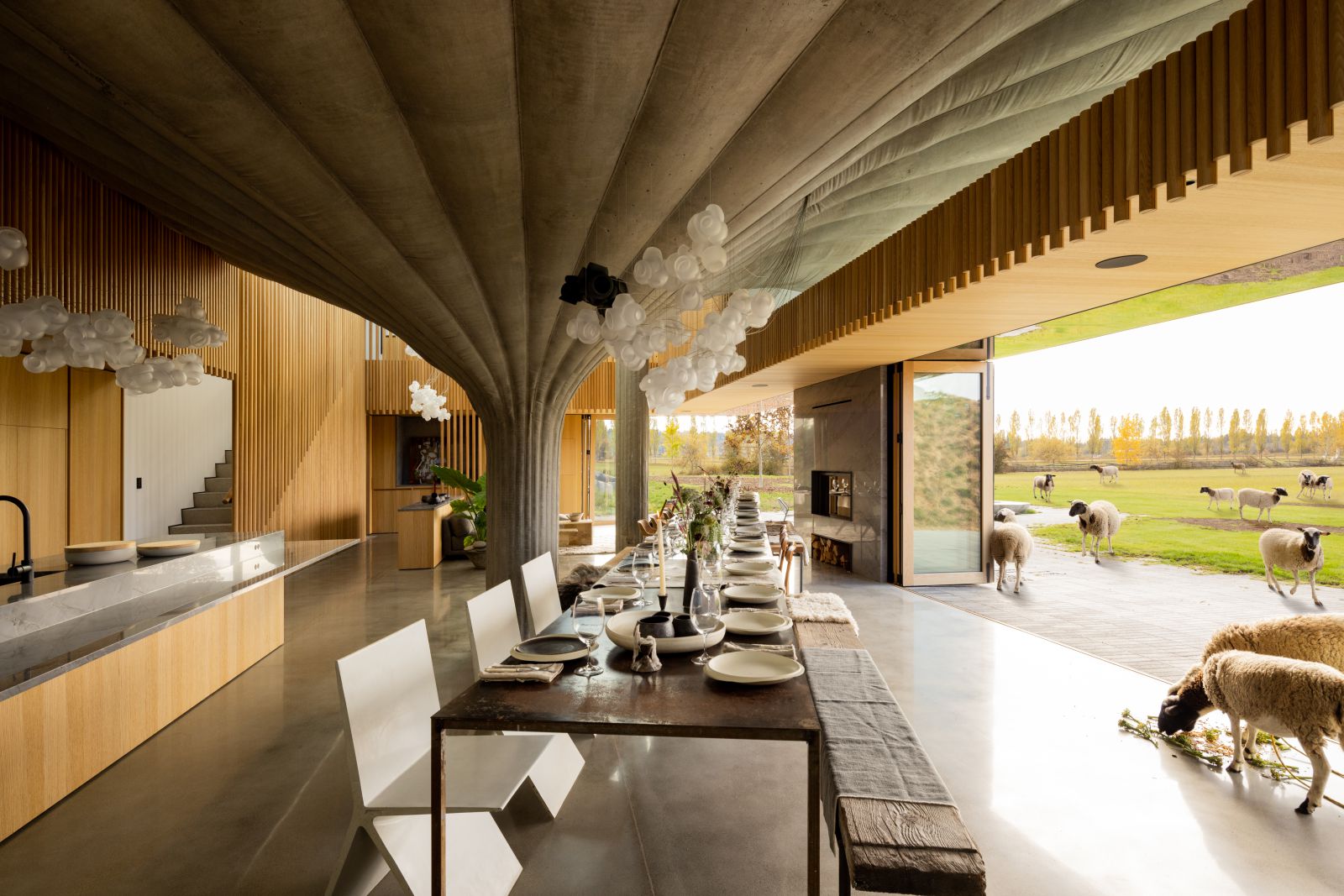Omer Arbel has completed 75.9, a family home on a hayfield in the Canadian Pacific Northwest.
Built around monumental ‘lily pad’ columns – the results of a method of concrete pouring invented by the studio – the house marks the first time Arbel applies his process-based design approach on an architectural scale.

Before Omer Arbel had been formally commissioned to build the home, on a vast acreage in the countryside south of Vancouver, Arbel started devising a method of pouring concrete into a fabric stretched out between lightweight plywood ribs arranged radially.
Only after the first column was poured on site – in a successful first experiment – did the clients agree to let Omer Arbel design the rest of the home around it.

The fabric-formed columns are treated as if they were found archeological ruins in the landscape, with the house considered a contemporary construction built around and among them. The living spaces are separated into four double-height volumes, built in glass and cedar wood.
On the roof grow magnolia trees, planted in the hollow tops of the columns. The surrounding hay field has been lifted like a carpet to cover the house’s connecting passages, allowing the architecture to merge with the landscape as if it were a natural extension of it.

Inside 75.9 (all Arbel’s projects are numbered chronologically) differing height and position for each column creates a cinematographic narrative of domestic habitation. The double-height living room, dining space, and open-plan kitchen are all under the canopy of one column.
Its rough finish stands in contrast with the polished floors – also concrete – and complemented by warm timber fixtures and furniture, as well as a lush, Japan-inspired indoor garden. Throughout, spaces are illuminated with pendants from Bocci, the Vancouver- and Berlin- based lighting company co-founded by Arbel.

75.9 is a result of over a decade of experimentation with material, and the most ambitious experiment in Arbel’s process-driven approach to date. By considering an ancient construction material anew, the house is at once a highly contemporary domestic landscape and a timeless monument with an archaeological scope. “For 15 years, we’ve developed a method of working with materials at the scale of an object,” says Omer Arbel.
“This is the first project where we’ve had the opportunity of trying that same methodology at the scale of architecture. Our approach has been to design methods of making concrete artifacts and treating them as if they were found form, as if they were archaeological ruins.

To divide the decision-making into two different phases, one focused on creating specific objects, and the other separate, much later, focussed on weaving them into domestic space.” He continues: “We’re increasingly coming to a time in human history where anything that can be imagined can be built. In that world, it becomes increasingly important to question what is worthwhile.
For me, the answer goes back to the analogue approach to materiality. We try to release control instead of gaining increased levels of more and more control. We try to set these systems in motion which let the material determine the form it takes.” Source by Omer Arbel Office.
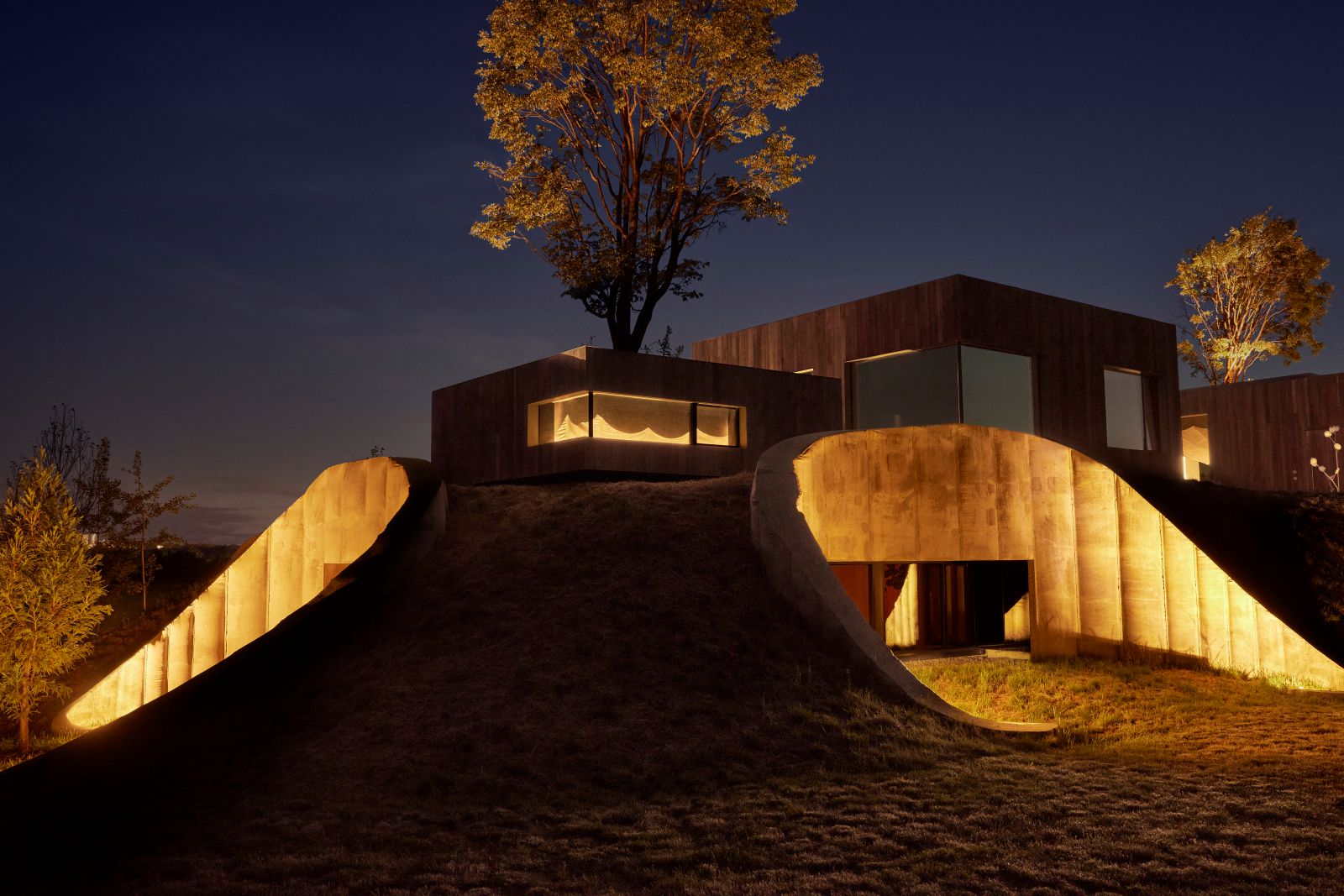
- Location: Vancouver, Canada
- Architect: Omer Arbel Office
- Project Leader: Mark Dennis
- Project Team: Omer Arbel, Mark Dennis, Kathryn Lamoureux, Jaedan Leimert, Graeme Smith, Tyler Wied
- Architect of record: Bruce Gernon Architect
- Structural: Thomas Duke and Nick de Ridder of Fast + Epp Structural Engineers
- Geotechnical: Matt Kokan of Geopacific Consultants
- Building Envelope: JRS Engineering
- Contractor: Chris Wright of Build Wright Construction with Joe Haley and consulting by Brad Martin of Treeline Construction
- Client: Joe and Keira Haley
- Gross floor area: 8000 ft2 | 740 m2
- Year: 2023
- Photographs: Fahim Kassam, Kezia Nathe, Courtesy of Send / Receive
